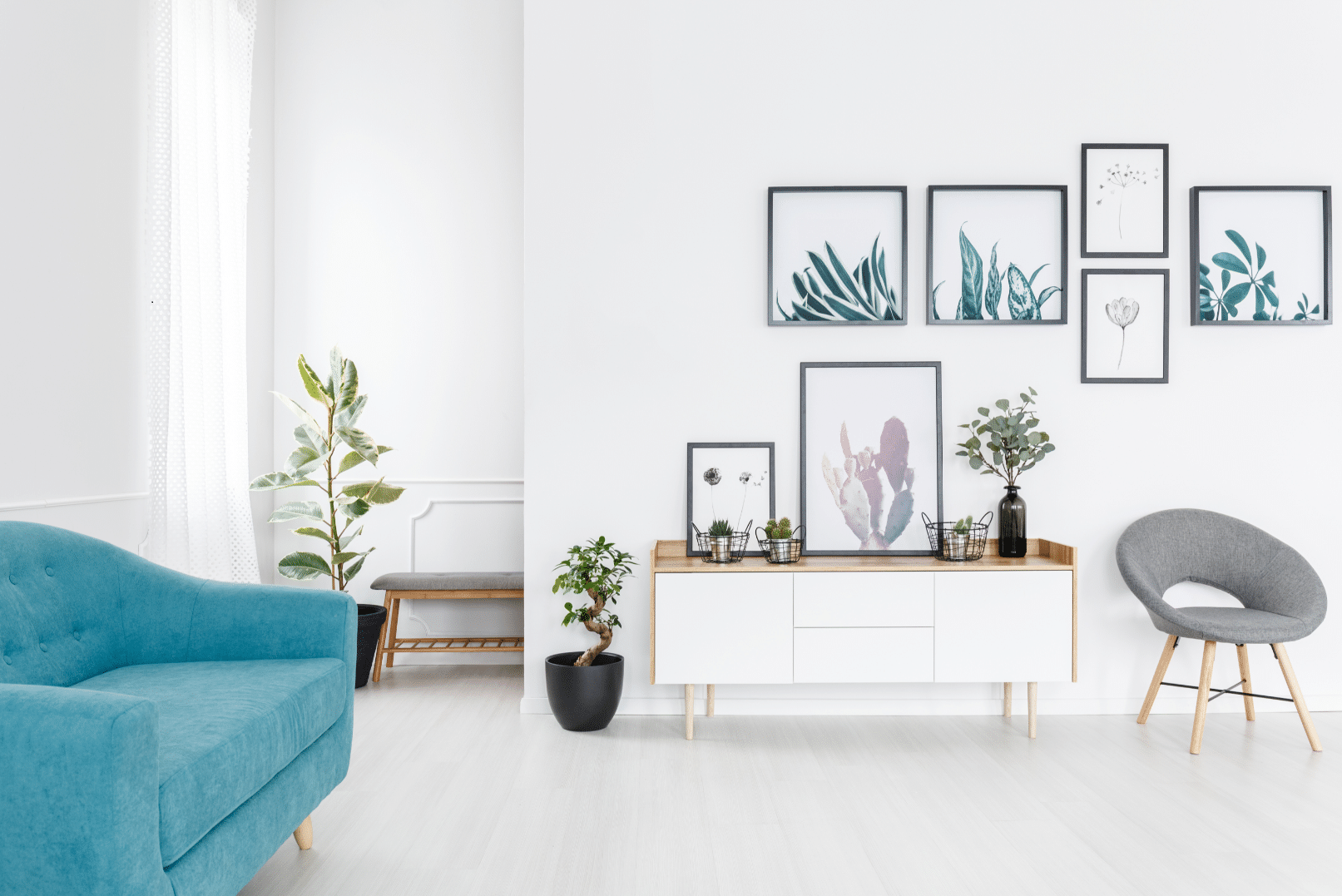So, you’ve visited one of our clean, comfortable, and well-maintained apartment communities, loved it (YAY!), applied, set your move-in date, and are ready to Love The Place You Live. We can’t wait. But now the grim reality of packing up your stuff, hiring a truck, deep cleaning your old place, schlepping your stuff, unpacking, decorating, and maybe even buying some new furniture sets in. It’s never easy, but we’re here to help you plan this next adventure so your move can be as smooth and stress-free as possible with our Moving Checklist.
One To Two Months Before Moving
Give Notice
First on our Moving Checklist is giving notice. The standard notice for most landlords is between 30 to 90 days. But this can vary by state and rental agreement, so be sure to check your lease/rental agreement. Ask your landlord/property manager to schedule a walk-through so you can be sure to do everything that’s expected for a full security deposit refund. An alternative is to photograph your empty place to prove you left it in good condition. Don’t forget to provide your forwarding address so there won’t be a delay in receiving your refund.
Schedule Cancellation of Utilities and Services
Contact each provider and let them know the effective date to terminate or transfer your service. Providers may include:
- Water and sewer
- Internet and cable
- Gas and electric
- Renters Insurance
- Gym (if moving too far to continue membership)
Purge
A move is the perfect time to get rid of clothing, furniture, cookware, small appliances, and accessories you don’t use or no longer want. Why pay to move them? Check our guide to assist you with purging your clothing.
Pick a Moving Company | Reserve a Truck Rental | Enlist a Friend with a Truck
Start now to ensure you have a truck for your planned moving day. If you’re using a moving company, be sure to check their reviews so you hire a reputable firm and get the best price. Large companies will be happy to provide you with an estimate, or you can get a ballpark price on many moving company’s websites. Confirm your moving company is licensed and insured by verifying their Department of Transportation (DOT) number.
Consider purchasing moving insurance to cover any damage. I learned the hard way (and by not reading the fine print), that most moving companies will not cover damages.
Create a Moving Binder or Digital Moving Folder
Key on our moving checklist is to use a three-ring binder or create a moving folder on Google Drive to keep track of everything—all your estimates, receipts, and an inventory of all the items you’re moving. Take photos of each room to assist you with the inventory. Photos and inventory will also come in handy if you need to file a claim for damaged goods.
Organize School Records
If you have kids, be sure to go to your children’s school and arrange for their records to be transferred to their new school district.
Get Supplies and Start Packing
Having the right supplies will not only ensure you can pack all your stuff but also that it will fit well inside the truck.
Moving supplies are readily available from your selected moving company and truck-rental facilities like U-Haul. In addition to boxes, consider getting tape, Bubble Wrap, and permanent markers. Don’t forget to order specialty containers, such as dish barrels or wardrobe boxes. Be sure to label all your boxes with the destination room and contents. Consider color-coding by room. Be sure to mark any boxes containing fragile items as such. Remove light bulbs from all lamps.
- Walmart has a deal for 36 boxes, tape, bubble wrap, and packing paper for $92. Using uniformly sized boxes can help make packing up a truck much more efficient.
- For items to take in your car, consider inexpensive IKEA bags. And the best news – while you can go to IKEA to get them, they are also available to buy on Amazon. I’ve moved almost too many times to count, and IKEA bags are a dream. They hold a boatload of clothes, towels, and sheets – and you can nestle breakable or large, unwieldy items In between the soft items. But use these only in your vehicle – having sturdy, taped containers for the moving truck is best.
Electronics
- Take photos of all your electronics so you’ll have a guide for hooking everything back up.
- Back up your computer.
Change Your Address
Important on any moving checklist is to make a comprehensive list and add it to your moving binder. Make notes of the dates you speak to anyone on the phone and get their name. Also note anything the agent tells you, like if you’ll owe money beyond the termination date.
- United States Post Office (USPS). Click here to change your address online.
- Voter Registration
- Social Security Administration, Department of Veterans Affairs, IRS
- Landlord/Property Management Office
- Physicians, dentists, and veterinarians (be sure to ask that your records be transferred to any new providers).
- School (for your kids or you if you’re at university)
- Credit card companies and banks
- Subscription services
- Department of Motor Vehicles for your car registration and drivers license
- Auto Insurance Company
- Your Employer (for your W2 form)
- Amazon, Chewy (or any store that delivers to you regularly)
- Don’t forget your friends and family! To make it really easy, you can send out cute a postcard with your new address or you can send a digital
Request Time Off from Work
Unless you are super-organized and don’t have too much furniture, you’ll probably need to allow more than just a weekend to move. Add moving dates to your calendar so there are no conflicts.
Eat Everything
Try and consume everything in your fridge, freezer, and pantry so you don’t have to pack your food. You especially don’t want to try and transport perishables. Donate any nonperishable food items to a local food pantry.
Moving Week
- Confirm your moving date with the movers, rental truck company, or friend-with-a-truck.
- Warn neighbors so your truck doesn’t block anyone in.
- Confirm transfer of utilities and services.
- Clean your old apartment paying special attention to kitchens and bathrooms. Remove all trash. Clean out closets and storage areas.
- Organize personal items to take in your car like a couple of changes of clothing, toiletries, and medication so you don’t have to hunt through all your belongings to find what you need. You should also keep valuables with you such as jewelry and important documents like birth certificates and passports.
- If you’re moving with a furry friend, make sure your pet has an ID tag, and arrange for a pet sitter.
- Line up a sitter for your kids.
The Day Before
- Remind your neighbors that there will be a truck taking up space the next day; say goodbye to neighbors who have become friends.
- Get cash for tipping anyone who helps with the move and for the pizza delivery person on your first night. Trust me, pizza or other food delivery will make your first night in your new place much less stressful.
- Go out to eat the night before your move so you don’t mess up your sparkling-clean kitchen and create more trash to take out.
- Shop for snacks and drinks to have on hand on a moving day, and pack some paper towels, toilet paper, basic cleaning supplies, trash bags, and maybe even paper plates, cups, and plastic silverware.
Moving Day
- Inspect your old place to be sure you haven’t left anything behind, including trash, and that the apartment is clean. Turn off all the lights, close the windows, turn the thermostat to 55 degrees, and lock the door behind you.
- Check your mailbox one last time.
- Turn in your keys! Many landlords will charge rent against your security deposit until they have possession of the apartment, meaning your keys are in their hands.
Your New Home
- You’ve done it! Your first order of business should be to inspect your apartment and note anything that you don’t want to get charged for, such as a stain on the carpet, missing switch plates, bent blinds, or torn screen. Document in writing and take photos. Many apartment communities will provide you with an Inspection Form to use.
- Don’t forget to update your driver’s license.
- Go grocery shopping.
- Meet your neighbors. Here’s a how-to guide.
- Now for the unpacking and decorating. For me, it’s the best part. Opening each box is like Christmas morning. And finding new homes for all my thingy. Maybe I’m weird, but I love it. As you begin, check out our guide for hanging artwork in your new place.
Well done. You’ve survived the move. We hope that our moving checklist checked all your boxes. Welcome home.


